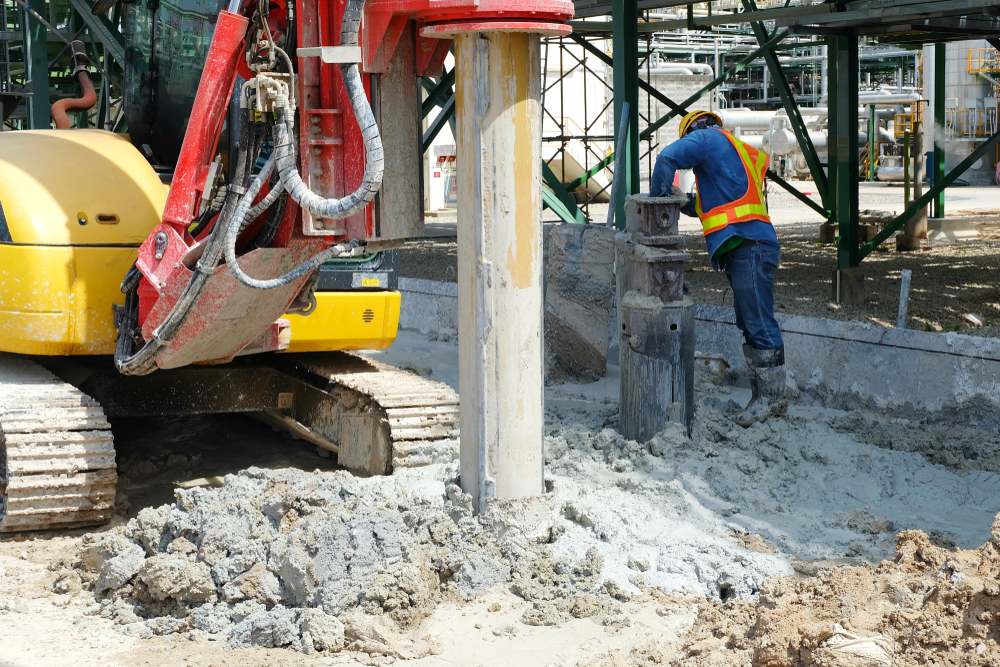5 Simple Techniques For Geotechnical Engineering For Construction Projects
Table of ContentsAn Unbiased View of Geotechnical Engineering For Construction ProjectsThe Basic Principles Of Geotechnical Engineering For Construction Projects Geotechnical Engineering For Construction Projects Can Be Fun For AnyoneLittle Known Questions About Geotechnical Engineering For Construction Projects.Rumored Buzz on Geotechnical Engineering For Construction ProjectsThe Ultimate Guide To Geotechnical Engineering For Construction ProjectsThe Single Strategy To Use For Geotechnical Engineering For Construction Projects
Concepts and Method of Ground Renovation. Ground Improvement Principles And Applications In Asia. Style evaluation in rock technicians.Cengage Understanding, Stamford, 666 p. Atkinson, J., 2007. The technicians of dirts and foundations. The Observational Method in ground design principles and applications.
Geotechnical Engineering For Construction Projects - Truths
Research laboratory and area testing plays a crucial duty in this process. By extracting examples from the earth's subsurface and applying a collection of tests, geotechnical engineers can predict the behavior of dirt layers and assess their viability for various construction endeavours. The significance of geotechnical engineering in civil design can not be overstated, attributable to numerous factors: The preliminary step in any kind of geotechnical study includes determining the soil kind at the building website.
Comprehending these characteristics makes certain that only appropriate dirt kinds are picked for the development, consequently avoiding potential architectural failings. The structure serves as the bedrock of any type of building and construction project. Selecting the proper structure kind is a choice that hinges on the thorough evaluation provided by geotechnical engineering. This makes sure the longevity and stability of structures by fitting the tons they will certainly birth.

Geotechnical site investigation is a crucial step in the preparation and implementation of any kind of building and construction task. It involves the collection and evaluation of data associated to the physical properties of dirt and rock under a suggested building and construction site. This information is essential for the design and building of safe, stable, and sustainable structures.
The Ultimate Guide To Geotechnical Engineering For Construction Projects
, additionally understood as subsurface expedition, involves a collection of activities aimed at establishing the soil, rock, and groundwater conditions at a building and construction website. The key goals are to determine potential geotechnical hazards, examine the design buildings of subsurface materials, and supply referrals for the style and construction of foundations, maintaining walls, and various other structures.
This might consist of geological maps, airborne photos, previous investigation reports, and historic information. The workdesk study assists in determining possible geotechnical concerns and planning the subsequent fieldwork. Following the workdesk study, a site reconnaissance is conducted to aesthetically examine the site and its surroundings. This involves observing the topography, water drainage patterns, existing frameworks, plants, and any kind of indicators of instability or disintegration.
The Main Principles Of Geotechnical Engineering For Construction Projects
Superficial test pits are excavated to straight observe and example the soil and rock. This approach serves for examining the top layers of the subsurface and determining near-surface hazards. Non-invasive geophysical approaches, such as seismic refraction, ground-penetrating radar (GPR), and electrical resistivity tomography (ERT), are utilized to map subsurface problems and find anomalies.
Soil and rock examples collected throughout the field examination are subjected to research laboratory testing to identify their physical and mechanical properties. Typical research laboratory tests include grain size evaluation, Atterberg limits, compaction tests, triaxial shear examinations, and combination examinations. These tests supply vital information for geotechnical evaluation and layout. The data gathered from the workdesk research, site reconnaissance, area investigation, and research laboratory screening are examined and interpreted to develop a comprehensive understanding of the subsurface problems.
The main benefit of geotechnical site investigation is making sure the safety and security and stability of structures. By comprehending the subsurface conditions, engineers can create structures and various other architectural components that can stand up to the tons and ecological forces they will go through. This lessens the threat of negotiation, decrease, and structural failure.
Geotechnical Engineering For Construction Projects Fundamentals Explained
This ensures reliable and risk-free building and construction practices. Geotechnical website investigations are usually needed by constructing codes and regulations.
This info is important for task managers, designers, and service providers in creating practical schedules, budget plans, and backup strategies. Geotechnical Engineering for Construction Projects. Skyscraper in a Coastal AreaIn a seaside city, a skyscraper residential building was click to investigate prepared on a site with presumed loosened sand down payments and a high water table. A detailed geotechnical investigation, including borehole exploration, CPT, and geophysical surveys, was carried out
More About Geotechnical Engineering For Construction Projects
Based upon these findings, the structure layout was customized to include deep pile foundations extending into steady strata, and ground enhancement methods, such as vibro-compaction, were executed to reduce liquefaction risks. This proactive strategy made certain the safety and security and stability of the building while avoiding costly post-construction removal. Facilities Advancement on a Sloping TerrainA significant facilities job, including the construction of a freeway and bridges, was intended on a hilly terrain with steep inclines.

The Leaning Tower of Pisa (Italy), a famous architectural wonder, is well known for its unplanned tilt from significant geotechnical concerns. The tower's foundation was improperly made to deal with the soft, unstable dirt under it, causing uneven negotiation and its unique lean. Our Going Here globe is populated with outstanding infrastructure projectsfrom towering skyscrapers to sprawling bridgesall standing testimony to the development of the numerous building equipment and approaches offered.
Geotechnical engineering is a customized field within civil design that concentrates on researching the behavior of planet products. This branch delves deep right into the groundinvestigating exactly how the soil, rock, and groundwater at a building website can influenceand be influenced bythe facilities that we put up on and into them. Before a solitary block is laid or a concrete structure put, geotechnical engineers probe into the earthgathering crucial information about the website's dirt composition, rock structure, and groundwater levels.
A Biased View of Geotechnical Engineering For Construction Projects

is a tool utilized to analyze the stability and load-bearing ability of piles during installation, leveraging the principle of wave proliferation. It maximizes construction efficiency by offering real-time analyses, hence guaranteeing risk-free and efficient stack view it structures. Among the useful applications of geotechnical engineering includes determining and executing the ideal methods for foundation building.
Stack driving stands for greater than the simple act of placing structural aspects into the ground. As a matter of fact, it is a very carefully managed procedure of transferring a structure's load past the less secure soil layers closer to the surfacedown to the more significant strata that exist underneath. When it comes to stack driving, consider how geotechnical designers expertly use this technique to uniformly distribute the framework's weight.